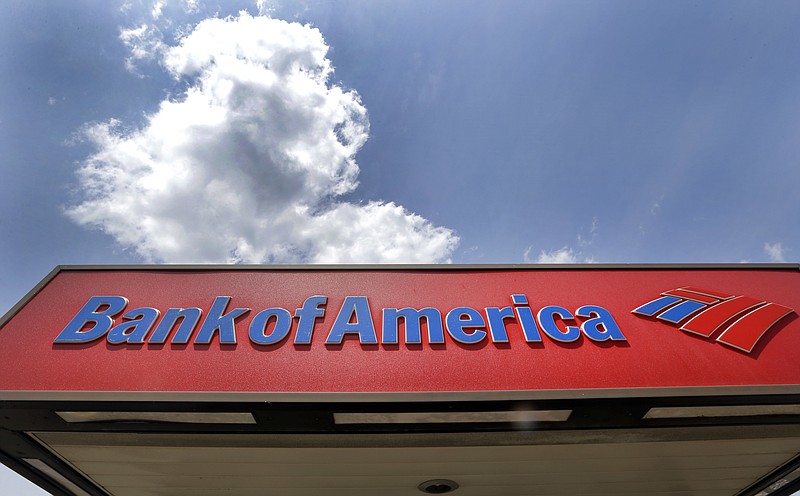Bank of America's second-quarter profits jumped 33 percent from a year earlier, the company said Monday, as like nearly all other big banks, it benefited greatly from the new tax law. The bank also benefited from the recent rise in interest rates, allowing it to charge more for customers to borrow.
The Charlotte, North Carolina-based bank said it earned $6.78 billion, up from $4.75 billion in the same period a year earlier. On a per-share basis, BofA earned 63 cents a share, beating average projections of earnings of 57 cents per share from industry analysts, according to a survey by FactSet.
Bank of America has benefited in recent years not only from an improving balance sheet - nearly all of the toxic assets from the financial crisis are now gone - but also from rising interest rates. BofA is among the most sensitive to changes in short-term interest rates among the big financial institutions because it does so much consumer banking and its balance sheet is skewed toward shorter-term securities. Net interest income across the bank rose $664 million, or 6 percent, compared to a year earlier.
While being able to charge borrowers more for loans, BofA has also been able to hold down the amount of money it has been paying to depositors. The bank is paying an average of 0.38 percent across all of its U.S.-deposits, up from 0.11 percent a year earlier, but well below its competition.
But it may have to start paying more for deposits in the future, however.
"We have been paying more for deposits, but the industry has yet to pay more on traditional bank accounts," said Paul Donofrio, BofA's chief financial officer, in a call with reporters. "It's a competitive world, and rates are going up, so I expect to see we will pay more down the road."
Bank stocks rose Monday, but so far this year investors have been more enthusiastic about other sectors, such as technology. There's a concern among investors about a recent development in the bond market known as a "flattening" of the yield curve. A flattening yield curve means short-term interest rates are rising faster than long-term rates. Because banks borrow money on the short end of the curve and lend out at prices at the longer end, the shrinking gap can compress bank profitability.
A flattening yield curve can also be a precursor for what's known as an inverted yield curve, which is when investors pay less for long-term rates and more for short-term rates. An inverted yield curve has historically been a reliable indicator of an economic downturn or impending recession.
There's also the ongoing trade dispute between the U.S. and China. In a call with reporters, Donofrio said "we haven't seen anything" in regards to businesses wanting to make substantial changes to their borrowing or business to protect themselves from higher tariffs.
Like other big banks, BofA saw its tax bill drop substantially following the passage of President Donald Trump's tax law last year. BofA paid $1.71 billion in income taxes in the quarter, which is down from $3.02 billion in the same period a year earlier.
Revenue, net of interest expense, was $22.61 billion, down from $22.83 billion in the same period a year earlier.
Bank of America shares rose 64 cents, or 2.2 percent, to $29.18 in midday trading. They are down 1.5 percent this year.
